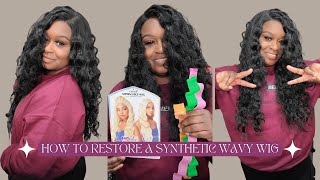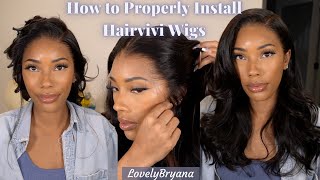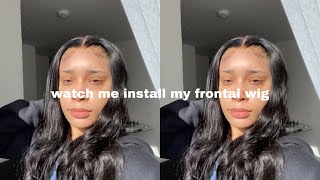Hair Color - Going From Dark To Light On Previously Colored Hair
- Posted on 29 September, 2018
- Hair Knowledge
- By Anonymous
In this video, Kelsey - Hairstylist at Tangerine Salon - shows the process of taking dark hair lighter in one session, on previously colored hair.
-~-~~-~~~-~~-~-
Please watch: "Do It Yourself Beachwaves - An Easy How To!"
https://www.youtube.com/watch?v=BPK9dN...
-~-~~-~~~-~~-~-
My name is Kelsey and I'm a senior status with tangerine salon. Today, I'm going to take you through the process of going dark to light, because I want people to understand that good, healthy blonde hair comes to those who wait. This is my model Raven, and I just want to take you through the process again of how we're going to shift her natural dark hair with already enlightened ends to getting her a lot brighter and show you the process with one service, how light we can helpfully Achieve her hair, I just want to convey the importance a little bit of consultation. First, consultation is key. We want to sit with the client and make sure that we are taking a look at various amounts of pictures to show them what is achievable and what is not. We also want to explain to them that there will be a plan set in place for their hair. In case their hair is going to take more than one service to achieve the goal that is desired. We also want to lay out a proper plan for them, with the cost of how much maintenance is going to be on future appointments and then what the cost is going to be for today's service as well, I'm going to go over the importance of what tools It takes to create this today, I'm going to use two of our Aveda bowls, I'm going to use two different developers. It is very important that you whisk the Aveda and Lightner to a smooth, creamy consistency for proper processing. You always want to make sure that you have an extra towel and some color remover too, just in case you get a little bit of color on yourself or on the client, so you can remove it immediately. I'Ve got my stack of foils, a nice foiling comb that I'm going to be using for my sectioning a brush to help me detangle. I'Ve got my two color brushes and in my clips, which are nicely placed and I cup so that they are out of the way and not messy the next step, I'm going to show you is my sectioning and then I'm going to get to work. First, I'm going to detangle the hair and make sure we get any of those messy knots out, and then you want to make sure that you confirm with the client where they park their hair, because it's really important to have that nice bright money piece in the Front since she parts her hair on the side, what I'm going to do is I'm going to go ahead and section this one section completely off, so we know that that's where we want to see the brightest most boldest pieces, then we're going to take just the Sections around the front of the face and isolate those away. Next, in the back, it's very important to notice the roles and rounds of the head, so I'm going to take a triangular section right at the crown, so we can make sure that we aren't inserting any weird diagonal foils that would create any type of striping. Then I'm just going to divide the remainder of the hair in half, and then this is the section that I'm going to start with. Kelsey is alternating foiling methods, one we've almost to the scalp with the lower developer formula of five volume, then a back combed file with the higher developer formula 20 volume make sure you check to see if the underside of the section is saturated as well as the Top, if it dries out it stops, working saturation is key to keeping the enlightener processing Kelsey shampooed with color conserved. Finish shampoo and applied 15 milliliters of dry Remini penetrating moisture to detangle. Now I'm going to do the reveal of her hair to show you what only one process looks like, as you can see, we are lying in an orange state. This is very common when you have previous color on your hair use, foreign color or also use foreign products. This is why I explained earlier that it may take more than one application to get to your desired result after I detangle her hair. The first thing I'm going to use is going to be our damage remedy equalizing solution, so that we can go ahead even out the porosity before I apply the toner applications. Kelsea applied the shadow root and toner at the chair, rather than the shampoo ball, because there was a line of demarcation from the virgin hair to the previously colored hair. The color needed to be strategically placed Kelsea used, color conserved shampoo after the toner service, followed with color, conserve finish for five minutes. She then missed it. 15 milliliters of damage remedy penetrating protein and layered color, conserve conditioner on top a haircut keeps the ends fresh and prevents damage and split ends from traveling up the hair shaft to the scalp. First, I'm going to be using our brilliant damage, control spray. It'S going to help lightly detangle the hair give her a little bit of UVA UVB protection, which is great during the summer. Then it is also going to help soften the cuticle as well. Next, I'm going to use a little bit of our daily hair repair. Can you use about a nickel size amount apply that mid chef's two ends daily. Hair Repair is great for remoisturize in the cuticle reestablishing some protein and also giving it's a nice heat protection. Next, I'm going to be using some of the nourishing styling cream. It'S going to again also help soften the cuticle, pull out any type of wave, give it a nice soft, weightless, movable style. Our products are formulated to protect your hair color following a service. Proper use of our products guarantee our color for the finishing touches. I'M going to use one of my favorite products, which is the dry remedy oil. What'S great about the dry remedy oil. Is that AC, a micro molecule, so it actually penetrates to the inner cortex and then after curling, I'm going to use a wide tooth comb to help break up the curls





Comments
Kamron Fultz: Very brilliant beautician can't go wrong with someone with this much talent.